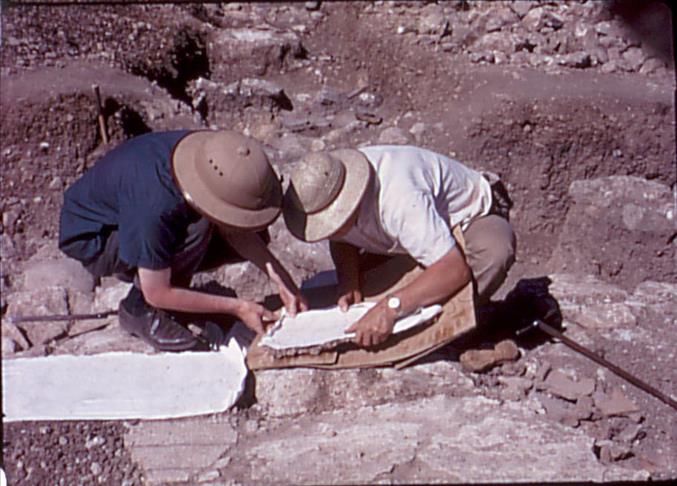
By Alex Pashley
LIMA, Peru
Archaeologists have scolded the Peruvian government for not protecting heritage sites, as it seeks to extradite Greenpeace activists for damaging the Nazca Lines in December.
Peru’s Culture Ministry was guilty of double standards following its fury at the NGO, as neglect and paltry funds advanced the destruction of the 1,500-year old mysterious etchings in the arid topsoil of its desert, they said.
“The government is careless with our cultural heritage,” said Ana Maria Cogorno, president of the Association of Maria Reiche, the German mathematician who pioneered the mapping of the lines from the 1940s.
Invasions by land squatters, illegal mining, and cross-country driving damaged the sacred geoglyphs on the Culture Ministry’s watch, Cogorno said.
Greenpeace activists on Dec. 8 trampled a stylized image of a hummingbird causing “irreparable image,” according to prosecutors. They unfurled a banner that read “TIME FOR CHANGE”, directed at climate change negotiators at a UN summit 280 miles north in capital Lima.
The act sparked international outrage, with the organization’s director, Kumi Naidoo, flying to deliver a personal apology to the Peruvian people while authorities sought to arrest activists who all eventually fled the country.
The lines’ lack of vigilance put few obstacles before Greenpeace’s entry within the 170 square mile area, which was made a UNESCO World Heritage Site in 1994.
Just two archaeologists work on the lines spanning the size of Manhattan, based in the city of Ica two hours away.
“You can’t manage the Nazca Lines by remote control. The whole system at the Culture Ministry is rotten,” Cogorno said in Reiche’s old home in Lima, surrounded by original black-and-white aerial photos on the walls and dusty archives.
“The budget for the protection of archaeological sites is miniscule,” said Johan Reinhard, a former explorer-in-residence at the National Geographic Society and seasoned anthropologist who put forward theories behind the lines.
Reiche had paid guards’ salaries and gas for their motorbikes, as well as funding a viewing platform, he added.
But in comments to The Anadolu Agency on Friday, a spokeswoman for the Culture Ministry announced it would invest $336,000 this year to “reinforce safe-keeping of the Nazca Lines."
Two days before the response, minister Diana Alvarez-Calderon fired an archaeologist after footage emerged showing him helping a Japanese tourist onto the lines in a separate incident in 2013. Mario Olaechea was speculated to have aided Greenpeace.
The funds would boost the number of specialists at its local Ica unit from two to six; employ a conservation lawyer; as well pay for motorbikes and drones, Maria del Rosario Bazalar said.
That wouldn’t tackle the root cause of the destruction, said Aldo Bolaños, an archaelogist and executive director of the Andean Landscape Observatory.
“You can have 1,000 drones but the squatters’ invasions and the illegal mining companies will continue due to the government’s neglect. The destruction from tourists or individuals is minimal, or is it the problem,” he said.
Educating the local population about the lines’ importance was key, Bolaños said. That includes an estimated 1,800 squatters who live in ramshackle huts on the arid plains.
The approximate $150 cost for a flight in one of multiple Cessna aircraft to best view the animals – including the famous monkey, hummingbird and spider drawings – and trapezoids that make up lines, was close to a month’s salary for some.
“The Nazca Lines lie abandoned and they need an organization – an administrative unit working with archaeologists and with permanent contact with the local population,” Bolaños said.
The Culture Ministry’s strategy had been “incoherent” with the announcement of new funds, having refused to adopt the findings of a master plan set out in 2012.
Extradition requests and the firing of archaeologist Olaechea was a decoy to divert attention from the ministry, said Cogorno, president of the Maria Reiche Association.
Peruvian authorities have thus far identified four activists including suspected leader, Argentine Mauro Fernandez, while Greenpeace has refused to hand over identities. It is unknown whether Peru will proceed to file extradition requests. Greenpeace has said it will pay for all the damages confirmed by an impartial professional.
The Andean nation, home to several archaeological wonders such as the Incan citadel of Machu Picchu, or the largest pre-Columbian city in South America, Chan Chan, has historically faced damage by human intrusion.
Looters long plundered monuments, though in recent times other spots have been affected.
In 2000, an Incan solar clock was damaged during the filming of a commercial, while a quad bike left marks on a candelabra geoglyph in nearby Paracas in 2010.
The Paris-Dakar rally caused damage in 2013 to parts of the Nazca Lines outside the UNESCO site, researchers said. The ministry said at the time the lines wouldn’t be affected.
Researchers have put forward several theories ranging from the Nazca Lines being markers for subterranean water pools for agriculture to alien landing sites.
Anadolu Agency website contains only a portion of the news stories offered to subscribers in the AA News Broadcasting System (HAS), and in summarized form. Please contact us for subscription options.

